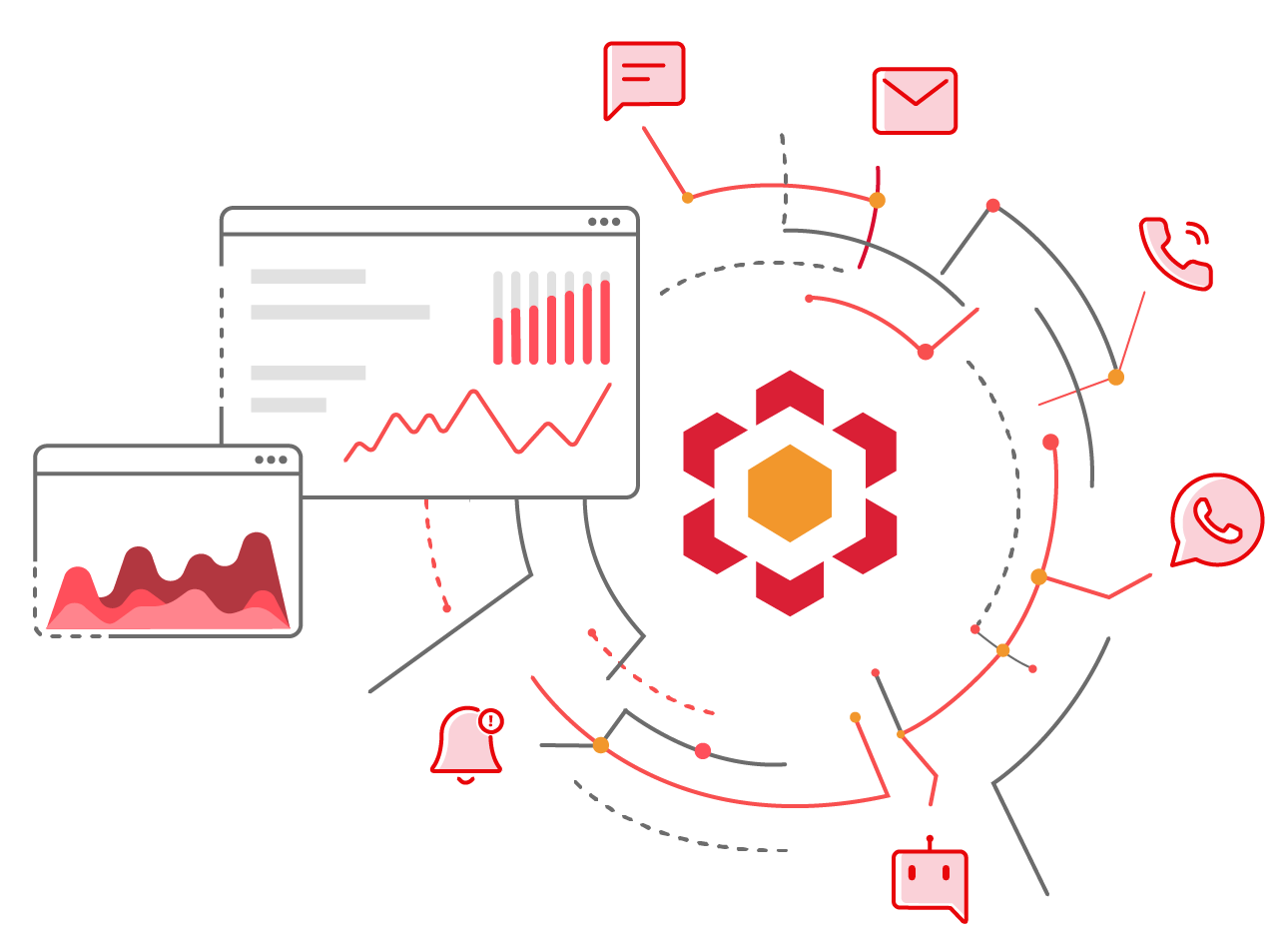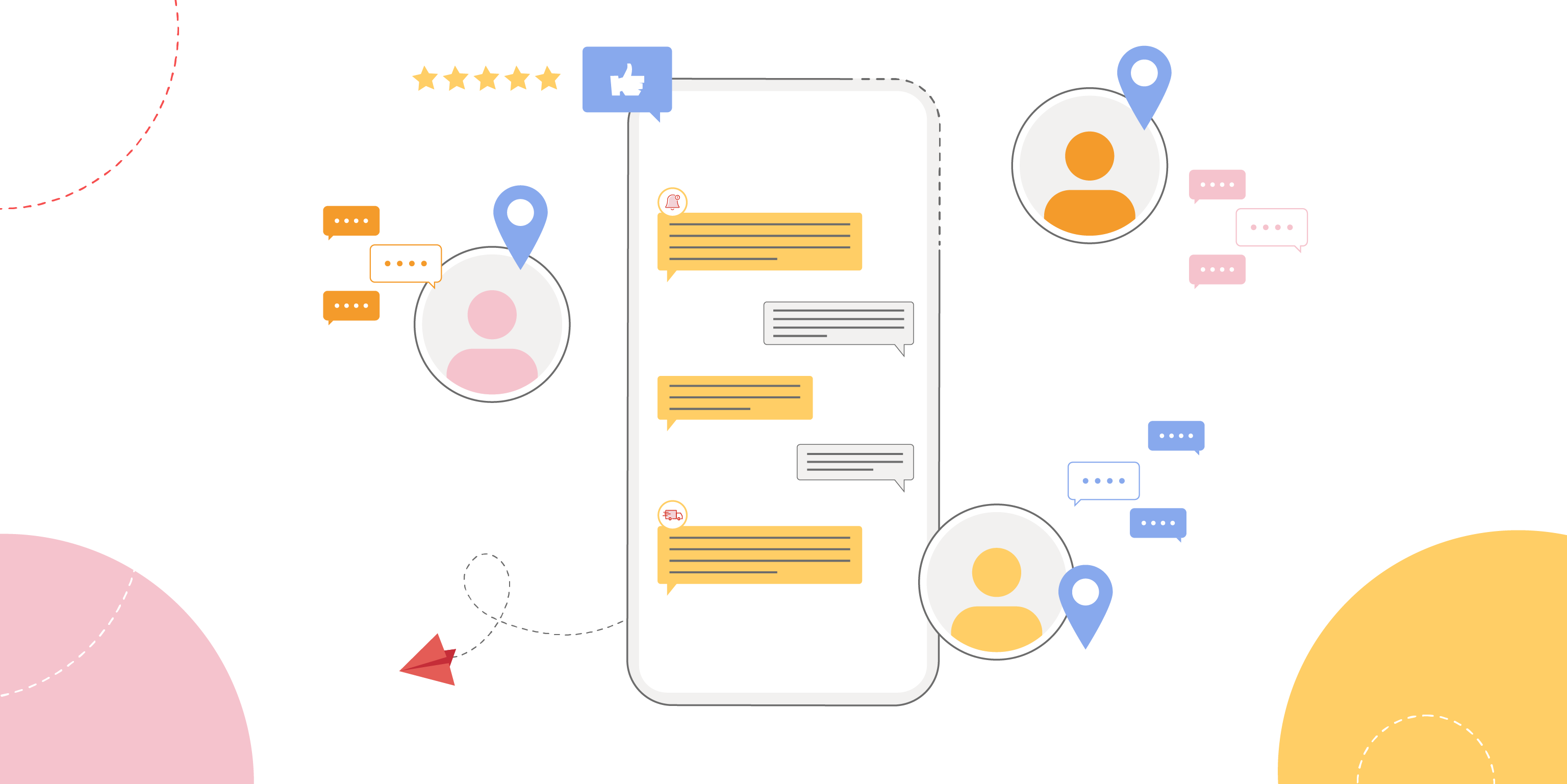With the advent of mobile technology, businesses have been presented with increased opportunities to streamline customer service and provide a more personalized experience for their customers. A2P messaging is one such technology that has revolutionized the way companies communicate with their customers by allowing them to send automated messages. By leveraging this technology, businesses can effectively manage large volumes of support requests quickly and accurately while delivering meaningful interactions according to each customer’s needs.
In this blog post, we will explore how A2P messaging can be used by businesses to provide effective customer service as well as enhanced experiences for their customers.
What is A2P messaging, and how does it differ from P2P messaging?
A2P messaging is a type of SMS messaging technique where a text is sent from a software application run by an enterprise to a consumer’s device. Mobile users will opt-in to subscribe to text message notifications that allow them to interact with businesses through a mobile network connection. With A2P messaging, the line of communication is typically one-way, meaning the recipient is not always expected to respond.
A2P messaging has become increasingly popular among businesses due to its ability to reach customers quickly and efficiently. This communication method is typically used for notifications such as promotional messages, service updates, appointment reminders, and other types of customer notifications. By integrating A2P messaging with other technologies, such as chatbots, businesses can streamline their customer service operations while providing a more personalized and cost-effective solution.
In contrast, P2P messaging (person-to-person messaging) is a type of messaging that occurs between two individuals. This includes typical, personal messages such as conversations amongst friends or family. P2P messaging is not intended for automated or bulk messaging.
How can businesses leverage A2P messaging for customer service and experience?
A2P messaging offers several benefits for both businesses and customers.
For businesses, A2P messaging provides a cost-effective and efficient way to communicate with customers. By automating customer notifications, businesses can reduce the need for manual intervention and improve their overall customer service operations. A2P messaging can also help businesses reach customers in real-time, ensuring they receive important updates and alerts promptly.
For customers, A2P messaging offers convenience and flexibility. Customers can receive notifications and updates on their mobile devices, allowing them to stay informed and take action whenever necessary. A2P messaging can also help customers save time by reducing the need for them to make phone calls or visit physical stores for updates and information.
Modern businesses can use A2P messaging in a variety of ways to improve customer service and experience. Here are a few examples:
Sending order updates: E-commerce businesses can send SMS notifications to customers with updates on the status of their orders, including when the order has been shipped or delivered. This helps in keeping the customers informed and reduces the need for them to contact customer support for updates.
Appointment reminders: Service-based businesses such as healthcare providers, salons, and auto repair shops can send SMS reminders to customers about their upcoming appointments. This helps reduce no-shows and improves the overall customer experience.
Survey requests: Businesses can send SMS surveys to customers to gather feedback on their experience. This can help businesses identify areas for improvement and make necessary changes to enhance customer service.
How can businesses measure the success of their A2P messaging campaigns?
Here are some key performance indicators (KPIs) that businesses can use to measure the success of their A2P messaging campaigns:
Response rates: Measuring the percentage of customers who respond to A2P messages can help businesses determine the effectiveness of their messaging content and timing.
Conversion rates: Tracking the number of customers who take action (such as making a purchase or booking an appointment) after receiving an A2P message can help brands measure the impact of their campaigns on customer behavior.
Customer satisfaction scores: Collecting feedback from customers on their A2P messaging experience can help businesses understand how well their messages are being received and identify areas for improvement.
To optimize A2P messaging campaigns, businesses can also use data analytics to gain insights into customer behavior and preferences.
For example, companies can track metrics such as open rates, click-through rates, and unsubscribe rates to determine which messages resonate with customers and adjust their campaigns accordingly.
By understanding the metrics that measure success, businesses can ensure that they’re getting the most out of their A2P messaging campaigns. This data can also help businesses identify areas to adjust or optimize in order to further improve performance. With thoughtful monitoring and analysis, businesses can maximize the success of their A2P messaging campaigns and maximize their ROI.
What are some best practices for implementing A2P messaging for customer service?
Implementing A2P messaging effectively is a task that requires careful planning and execution to ensure optimal results. Here are some of the best practices for implementing A2P messaging for optimal customer service delivery.
Gather and Segment Data: Before implementing A2P messaging, gather data about your customer base to identify the most effective communication channels. It is also advisable to segment your customers based on variables such as demographics or purchase history. This will enable you to tailor your A2P message content to specific customer groups, increasing the relevance of your messages and the potential for engagement.
Prioritize Privacy and Security: A2P messaging can be vulnerable to attack, especially given the sensitive data that may be transmitted. Thus, it is important to implement a secure messaging platform equipped with data encryption, two-factor authentication, and Secure Socket Layers (SSL). Businesses must also provide clear communication to customers regarding data usage, privacy policies, and opt-out opportunities.
Provide clear opt-out options: It’s important to provide customers with a clear way to opt out of A2P messaging to respect their preferences and avoid potential legal issues. This can include providing an opt-out keyword or a link to a preference center where customers can manage their messaging settings.
Facilitate Personalized and RBM Messaging: Rich Business Messaging (RBM) enables companies to send messages with multimedia content, such as images or videos, as well as interactive buttons that allow customers to select options. This tool provides an excellent opportunity to expand on personalized messaging to drive engagement with customers. By leveraging the insights gathered from data segmentation, companies can send more personalized communications that are more likely to draw customer response.
Monitor message frequency: To avoid overwhelming customers with too many messages, businesses should monitor their message frequency and adjust accordingly. This can include setting limits on the number of messages sent per day or per week.
Integrate with CRM Platform: Integrating A2P messaging with existing CRM systems can help businesses streamline their communication channels and maximize the efficiency of communication efforts. By integrating CRM systems with A2P messaging platforms, teams can manage customer queries, complaints, and service requests from a central location.
In Summary
A2P messaging is transforming the way businesses interact with clients and is revolutionizing customer experience. As the benefits of this form of conversation become more prominent, this trend will continue to expand throughout all industries.
Businesses can now reach their customers wherever they are at any time – even in remote areas where communication may have limited access. As customer service strategies adapt to respond more quickly and responsively, shorter wait times for customers lead to increased satisfaction and better client experiences overall.
With A2P messaging, companies can streamline their customer service process and increase retention rates, making it a valuable tool for providing an exceptional customer experience that ultimately drives success.
Kaleyra
The trusted cloud communication platform
Supercharge Your Communication!
Get in touch with our experts who strive hard to bring the very best in cloud communications technology to you.




























